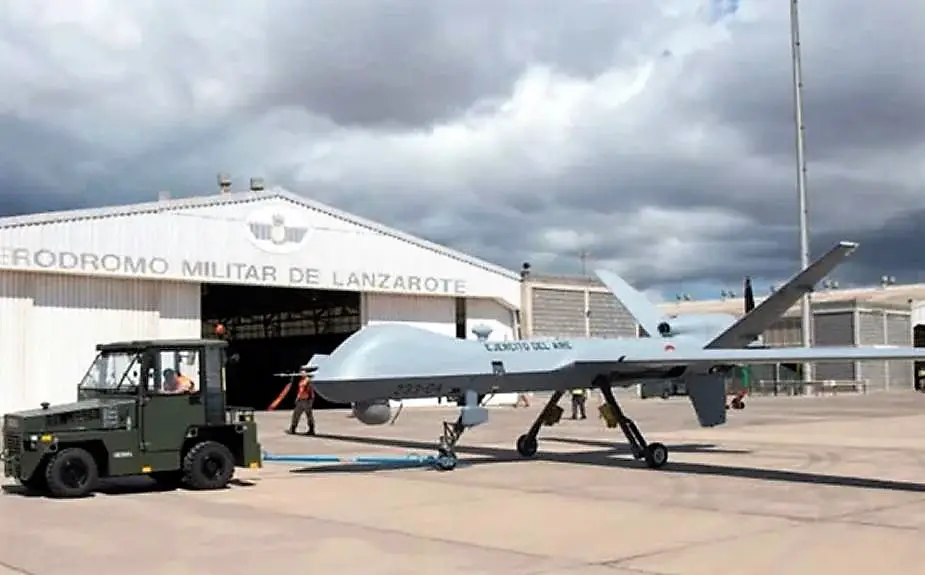The Spanish Air Force will finally start arming its four Predator B drones with bombs and missiles, Chris King reports in euroweeklynews.com. It confirmed it on Monday, February 7. These UAVs are currently in service with the 233 Squadron at the Talavera la Real air base located in Badajoz.
Follow Air Recognition on Google News at this link
 Predator B drone at Lanzarote airbase (Picture source: Spanish Air and Space Force)
Predator B drone at Lanzarote airbase (Picture source: Spanish Air and Space Force)
According to the Revista de Aeronautica y Astronautica, an official publication of the Air Force, efforts will begin to arm these drones, which have been operational since the beginning of 2021, as reported by larazon.es. These drones are initially configured for intelligence, surveillance, and reconnaissance (ISR) missions, but the system developed by the General Atomics Aeronautical Systems (GA-ASI) can also carry missiles and conduct attack missions.
In February 2016, the Spanish government selected General Atomics Aeronautical Systems, Inc. (GA‑ASI) to deliver four Predator B/MQ-9 Reaper Remotely Piloted Aircraft Systems (RPAS) for the Air Force's airborne surveillance and reconnaissance tasks.
GA-ASI’s multi-mission Predator B is a long-endurance, medium-high-altitude RPA that features an extensive payload capacity (850 lb/386 kg internally, 3,750 lb/1,700 kg externally), with a maximum altitude of 50,000 feet/15240 meters, and can stay aloft for up to 27 hours. Complementing this capability, SENER and the Spanish industry will leverage their proven engineering and manufacturing experience to optimize the sustainment and capability of the Predator B system in support of the Spanish Armed Forces.
The drones would be equipped with MTS-B Electro-optical/ Infrared (EO/IR) sensors and GA-ASI’s Block 20A Lynx Multi-mode Radar, two Block 30 Ground Control Stations (GCS), and Satellite Communications (SATCOM) and Line-of-Sight (LOS) data link capabilities by means of a Spanish-U.S. Foreign Military Sales (FMS) agreement. Predator B is currently operational with the U.S. Air Force, Royal Air Force, French Air Force and Italian Air Force. Some 245 Predator B drones have amassed more than one million flight hours since the first flight in 2001.
As Infodefensa.com published, for the use of weapons, it would only be necessary to update the software at the ground control station (GCS), where the device is controlled from, Chris King writes. Other hardware would need to be installed to use the weapons, basically, the pylons, bomb racks and the specific components of each weapon.
Since 2016, the debate on the need to arm these UAVs/RPAS has been recurrent. The Spanish Air Force will study the deployment of its Predators for the first time in operations this year, said the aforementioned publication. This is likely to occur as part of the European Union’s anti-piracy operation in the Indian Ocean, where Spain has had a Lockheed Martin P-3 Orion maritime patrol aircraft permanently deployed in Djibouti. After decommissioning the last P-3 – precisely the one that was in the Horn of Africa –, the Air Force reportedly plans the occasional deployment of a CN235 (D.4) for maritime surveillance and will also analyze the options of participating with Predator B.
















